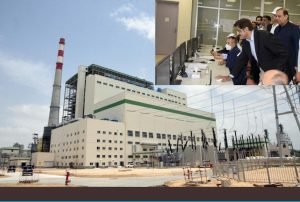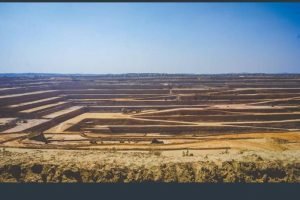

The province of Sindh is undoubtedly rich in natural resources and its great contribution to the development of economy always played pivotal role in the history of country. The modern and cheap sources of energy is the back-bone of any country, especially the Alternative Sources of Energy in Sindh are being discovered and its speedy relief seen in the recent past ten years.
A day ago, the Chief Minister Sindh Syed Murad Ali Shah has inaugurated 330 MW Hubco power plant in Thar with that now provincial government is successfully contributing about 990 MW coal-fired power to the national grid. http://@CM_Sindh http://@SindhCMHouse
Thar-coal is cheap and more environmental-friendly source of energy in Sindh that would contribute to national power grid station. The coal-fired power project of Hub Power Company Ltd (Hubco) and its partners at Thar Coal Block-II, Fauji Fertilizer Company Ltd. (FFC), China Machinery Engineering Corporation (CMEC) team was appreciated for their efforts at the inaugural ceremony. On this occasion Sindh Minister for Energy Imtiaz Ahmed Shaikh.http://www.sindhenergy.gov.pk/
Overall, the key role of Sindh Government in production of clean energy to the national grid will definitely help in power short down to country and economy. Till now the alternative and sustainable sources like; wind power, tidal power, coal energy, solar energy, bio-mass energy etc at a time when the severe energy crisis is blamed for slackening of economic activities.
A hard-wearing cure for the power crisis lies in shifting reliance to the renewable and alternative energy, which is ultimately a cheaper source of power generation and a worthwhile investment in the remote and rural areas of lower Sindh like in Thar-Desert.
There are different locations in lower parts of Sindh which could really play more important role in contribution of power to national grid but unfortunately those locations are not operational like in Thatta, Badin and Jhampir. Currently, Lakhra is operational with annual production of two million tons.
At present 40 per cent coal is being utilized for power production throughout the world, but in Pakistan it is less than one per cent. Necessary measures are required for development of coal resources with the help of technical people, who are available in Sindh. However, Engro Powergen Thar Limited’s (EPTL) lignite coal power plant in Thar has started pumping 990 MW of electricity generated by domestic coal into the national grid.
Likewise, the Wind Energy projects in Jhampir, a small town in Thatta District of Sindh and about 114 kilometres from Karachi, a 50mw wind power project of Fauji Foundation Energy Limited is formally feed into the national grid on commercial basis. The project completed at a cost of about $135 million. The same company is working on two more projects of equivalent capacity.
The FFC has been able to secure a favourable electricity tariff of about 16 cents per unit which may sound higher when compared with cheaper hydropower and gas based power generation.
United Energy Pakistan, Zorlu Energy Pakistan, a subsidiary of the Turkish firm Zorlu Enerji,, NTDC are among the major companies working on the wind energy project at That-Jhampir Corridor. Nooriabad Industrial Area, a 25-kilometre dirt track leads southeast to the Zorlu Energy Pakistan’s wind turbine farm in Jhimpir. The sun hangs low over the monotonous landscape: A vast stretch of uncultivated land dotted with bushes and trees. The wind turbines pop up Huge three-blade structures mounted at the top of towers going up 85 metres into the sky.
The cheap energy also had the additional benefits of being clean, sustainable with absolutely no harmful effects on the environment.
